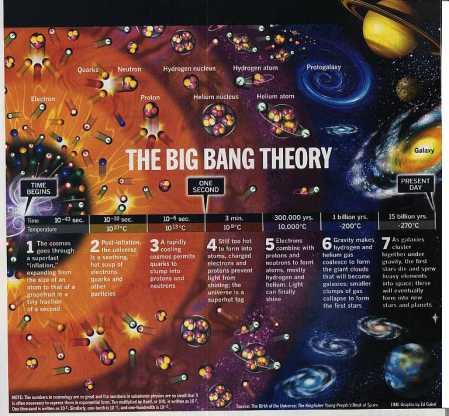Sumber : youtube.com
Mario Teguh's Quotes
Planets of the Solar System
Earth Today
Statistic
Artikel Astronomi Teori Mengenai Alam Semesta

Dari Mana ya, Bintang-Bintang Mendapatkan Warnanya?

Bintang kita, Matahari, berwarna kuning sangat pucat. Tetapi bintang-bintang memiliki ragam warna yang mencengangkan.
Ada satu kelompok bintang yang disebut "Kotak Permata." Di tengah angkasa yang hitam beludru terdapat sebidang bintang-bintang biru safir, dengan satu bintang oranye berkilau di tengah.

Perbedaan warna bintang tergantung pada suhu mereka yang sangat berbeda-beda. Beginilah cara kerjanya.
Cahaya adalah radiasi yang bergerak dalam gelombang. Jarak antara puncak satu gelombang dan puncak gelombang berikutnya disebut sebagai panjang gelombang.
Pesawat NASA Teliti Kawah Es di Kutub Planet Merkurius

Para penyelidik misi pesawat ruang angkasa Messenger makin mengintensifkan pantauannya. Maklum, wahana milik NASA itu pada Jumat pekan lalu sukses memasuki orbit sekitar Merkurius. Alhasil Messenger menjadi pesawat ruang angkasa pertama yang mengorbit planet terdalam.
"Kami berharap dapat meningkatkan pemahaman terhadap salah satu planet yang jadi tetangga terdekat," kata Sean C. Solomon, penyelidik utama misi Messenger. Nama wahana penjelajah robotik ini merupakan singkatan dari Mercury Surface, Space Environment, Geochemistry, and Ranging.

Wujud Badai Dilihat dari stasiun luar angkasa
Di bawah ini adalah beberapa foto badai yg diambil
dari “International Space Station” selama beberapa tahun belakangan ini :

Gambar badai Catarina ini diambil pada 27 Maret 2004 oleh kru Ekspedisi 8 ISS. Badai ini terlihat baru saja mendarat di provinsi Catarina – Brazil Selatan (maka dari itu badai ini akhirnya disebut Badai Catarina).
Badai Douglas pada tgl 23 Juli 2002. Saat itu Douglas kembali ke status 1 saat dia mulai bergerak meninggalkan wilayah Baja California Peninsula. Foto ini diambil melalui “Moderate Resolution Imaging Spectroradiometer (MODIS)” di satelit Terra.

Pemandangan indah dari ketinggian ini mengabadikan badai Emily pada tgl 16 Juli 2005. Stasiun Luar Angkasa Nasa mengambil foto ini pada saat berada di teluk Mexico dan sepertinya sedang bergerak kearah barat menuju terbitnya bulan. Emily pada saat itu masuk dalam kategori 4 dengan kekuatan angin mendekati 155 mph dan bergerak dari barat ke barat laut melalui perairan Karibia.
Picture Of Planets
Kumpulan Foto Luar Angkasa yang Indah
First Image From Space
Contrary to popular belief, the first man-made object to enter space was not Sputnik. An amazing factoid considering that the space race was a major battleground in the Cold-War between the Soviets and America. Oddly, very little information about these first rockets into space can be found almost anywhere. One of the best references is this article from Air & Space magazine’s web site. The article is centers around the fact that, in addition to being one of the first man-made objects in space (the first was actually German!), the V2s also returned the first images of Earth from space.
On October 24, 1946, a V2 rocket was blasted off from White Sands Missile Range and climbed about 65 miles straight up. There it began snapping images until minutes later it fell back to Earth with no parachutes. The cannister containing the camera was smashed, but luckily the film itself was unharmed and was later developed revealing to us Earthlings a glimpse of our own world from higher up than we had ever seen before.

While the above image is fascinating enough… that image was shot on V2 #13 and later experiments also took cameras along for the ride. Considering how long ago these were taken, another image from V2 #21 taken in 1947 is even more impressive in its detail and clarity.















